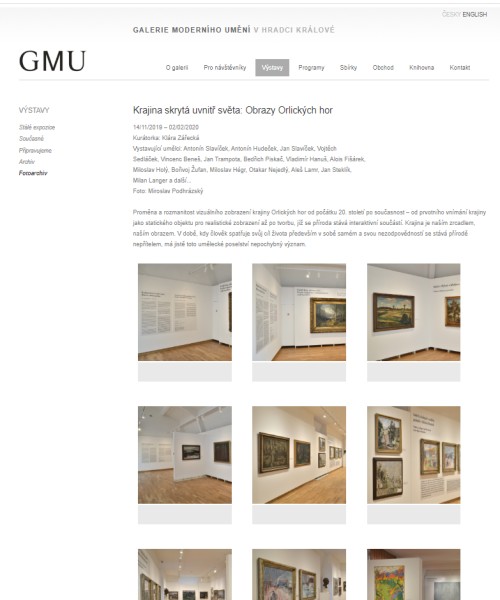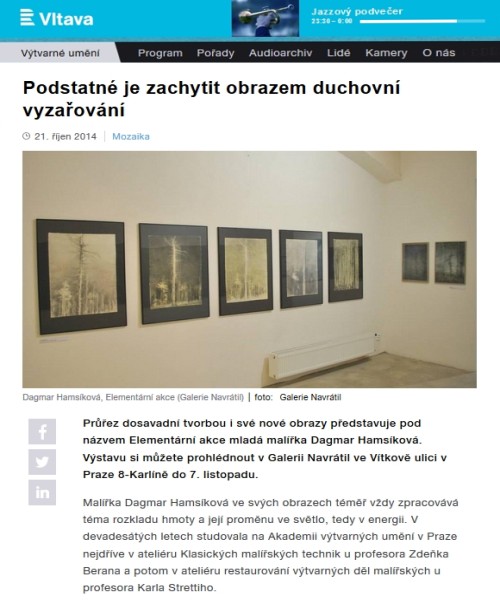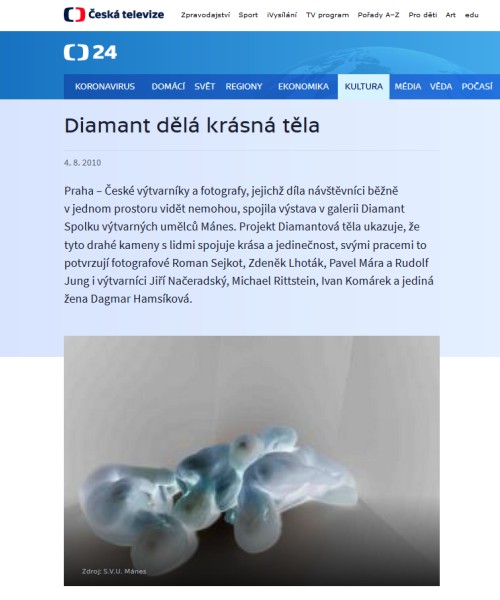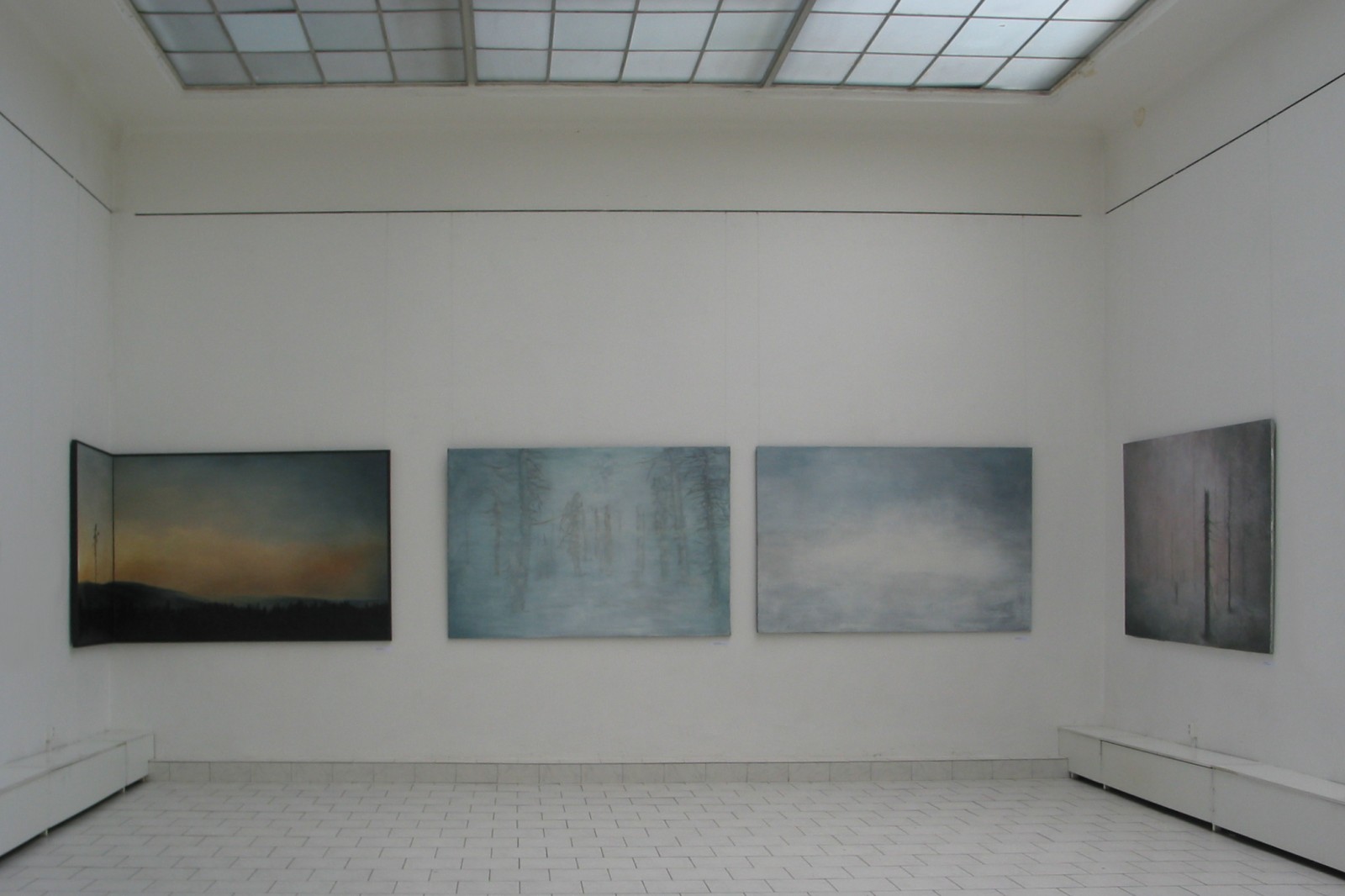
Dagmar Hamsikova in her paintings almost always deconstructs the matter reflecting its transformation into light, ie energy. How did she come to this? First she was enormously interested in the temporality of Being or the duration of objects in time, and their demise. During her studies in the 90s at the Prague Academy of Fine Arts with Prof. Zdenek Beran (classic painting techniques) she created images on such seemingly serious topics as mouldering dead fish heads (The Heads) above which hovered the haze of decay, or dental prostheses (The Teeth) lying forlornly in a dusty empty space - both set in a baroque frame. This is the time when she and her classmates enjoyed baroque folk poetry on the topic of the decline and transience of human existence.
But Dagmar stretched further. Her image, The Deconstruction of the Nude, extended in space using a three-dimensional figure, already suggests more scientific interests. In the case of the cycle of six variants of one portrait from the 90s, she played with its transformation using light, reversing the colours, and deconstructing the shape into small particles. One image was formed as a simple plain canvas; another was a colour transformation uniquely processed using early computer graphics. This empirical approach to painting may be derived from her study of fine art restoration in the Studio of Professor Karel Stretti.
In the later paintings of landscapes named “8 Megapixel”, we can observe a more and more elaborate layout of space broken down into particles. The non-existence of the physical universe which we see from the Earth, is appropriately expressed using digital photography. The gouache series “Trees”, dedicated to trees hit by lightning, reminds us of the principles of a photographic negative. These images create a kind of intersection between modern science and ancient Indian texts such as the well known Prajna Paramita Sutra, the essence of which, is the proposition "shape is emptiness; emptiness is shape”. A similar conclusion was reached in 1944 by the father of quantum theory, Max Planck. At the end of his life, he said: "As a man who has devoted his life to science and the study of matter, I can say, as a result of my research of the atom, that there is no such thing as matter. All matter originates and exists only by virtue of a force which brings the particle of an atom to vibration and holds this most minute solar system of the atom together. We must assume that behind this force is the existence of a conscious and intelligent mind. This mind is the matrix of all matter." Dagmar here lets the mass disappear, whilst Planck’s and Einstein’s electromagnetic field attracts attention by its radiated energy.
“Shape is emptiness; emptiness is shape“.
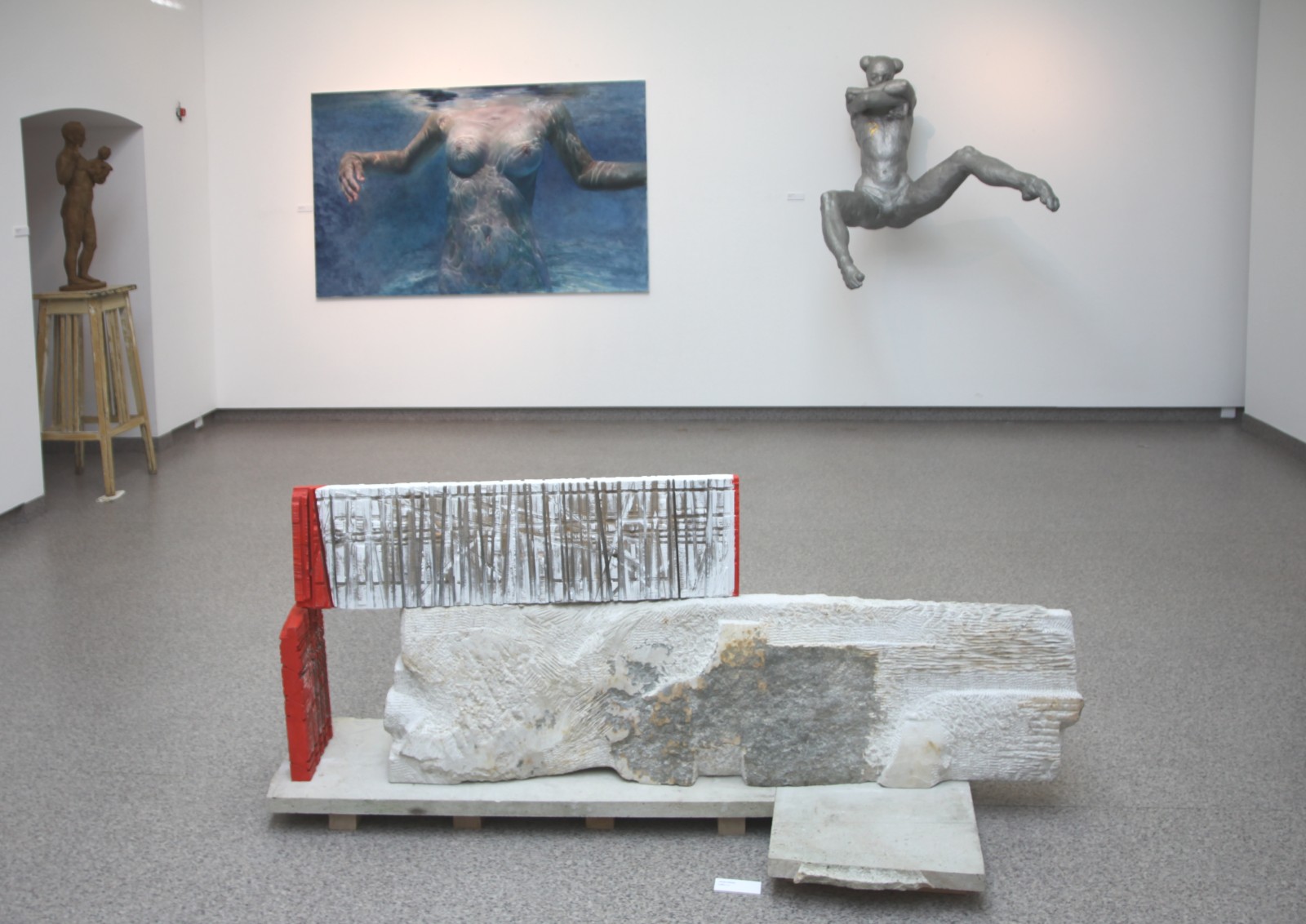
Each of Dagmar’s artistic subjects is always more of a pretext to display its factual existence. The author however, never completely abandons the material world and often puts at least one completely realistic painting in the series, whether it's a figure or a landscape. A meditative mood is clearly evident in her painting called “Landscape” from 1995, which irresistibly draws the viewer deep into the distant view veiled by Leonardo’s Sfumato. In the foreground, the line of heavy clouds is pierced by a naked tree trunk connecting heaven and earth. In other landscapes, the misty and abstracted reality is inspired predominantly by the foggy scenery of the Eagle Mountains (“Foggy Vision”). The paintings by Dagmar Hamsikova are significant for their constant pulsation between the material world and abstraction, which are de facto, not different from both the scientific and philosophical points of view. The German philosopher, Walter Benjamin, claims that unlike their reproductions, original paintings created by an artist have their own aura which can be directly perceived only from the original. The aura, a kind of radiation, can be detected solely when we rest our eyes on the painting with an open mind.
In the case of Dagmar Hamsikova’s paintings, we can say that the older ones, together with the realistic or hyper-realistic ones, create an illusion which attracts the mind inwards, absorbs, draws into the bowels. This is particularly perceptible in the paintings of landscapes with deep insights. Similarly, one’s attention is attracted by the paintings depicting the physical matter of a human body. It is necessary to look at nudes depicting especially the lower i.e. emotional half of the body with innocent eyes, which, e.g. in the case of the nude in the water with rounded breasts (Elements 1) would be hard even for a child. And vice versa, abstractly tuned pictures or some of the latest paintings by Dagmar Hamsikova rather transmit the above mentioned pulsation. They depict something completely new. Instead of the decomposition, the matter is rather assembled; the body is water, and the water is body. As if the light formed the body by its touch, photons partially pass through and partially reflect whilst forming the shape. Besides the white light as the initial and ultimate form, a spectrum of colours appears in the paintings. These colours are, according to Buddhist teaching, the pure forms of individual elements. Although some of Dagmar’s paintings are dominated by water, and a human body contains almost 70% of water, all five elements are present together. Unlike the "dematerialisation" in the previous pictures, we are witnessing a creative act of the universe. This is why these paintings more than any other, emit light; you can feel the radiation.
In addition, Dagmar Hamsikova wishes to continue with her favourite realistic paintings through the creation of portraits, which mentally fully resonates with her abstract paintings. She comments: "The portrait is only a pretence how to depict the internal radiation from the human, and I found it possible through the realistic approach. I am interested in this transcription. I love to create the transfer from the hyper-realistic approach to the emotional attraction for the observer. To make everyone who looks at the painting fascinated. This is where I am heading."
Dr. Magdalena Nespesna, Ph.D., Fine Art Historian
For Prestige magazine, 12/2014

